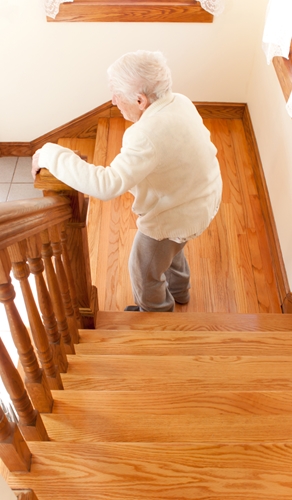New study shows one way to detect onset of knee arthritis
According to the U.S. Centers for Disease Control and Prevention, over 5.2 million Americans develop some form of arthritis as they age. Almost half of Americans aged 85 years or older experience knee osteoarthritis, which can end up turning into a painful, debilitating condition that interferes with daily activities.
Many studies have worked to find reliable methods to detect the onset of the condition, which would allow for early diagnoses and treatment to prevent the symptoms from worsening. A new study performed by the University of Leeds has identified one activity that could serve as a sign that someone is developing arthritis. The research was published in the medical journal Arthritis Care & Research.
Simple step to detecting knee OA
Knee osteoarthritis is among the most common forms of arthritis experienced by older adults. The goal of the study was to find activities that first become painful during the development of knee OA, which would help those impacted seek effective treatment earlier.
The researchers examined 4,673 participants who had osteoarthritis as well as some who were considered at high risk of developing the condition. Each patient filled out annual surveys for as many as seven years. These personal recordings assisted the researchers in finding which specific activities or daily tasks were most painful over the lengthy period of time.
The results showed that of all the painful activities reported, pain while using the stairs was the first and most frequently experienced symptom experienced by osteoarthritis patients. After using the stairs, there were other painful activities reported, which included walking, standing, sitting and resting in bed – one of the last activities when pain emerges.
"At present we have little concept of 'early' osteoarthritis and often only see people when they have significant longstanding pain and loss of function. This research is vital to understanding early symptoms of knee osteoarthritis," said Philip Conaghan, professor of musculoskeletal medicine in the School of Medicine and lead author of the study.
Knowing that pain while using the stairs frequently signifies the onset of knee OA could play a major role in enabling physicians to make early diagnoses. It could even result in more effective treatment methods.
Common symptoms of arthritis development
If arthritis is not treated soon after the onset of the condition, it has the potential to grow increasingly painful, further impacting daily activities and interfering with one's health. There are a few signs that represent the early development of arthritis that could greatly assist an older adult in getting treated before the symptoms worsen.
Fatigue is one of the very first side effects of arthritis. In fact, people may begin to experience chronic fatigue months before they start noticing other, more obvious symptoms. Sometimes fatigue is also accompanied by depression and mood changes. If patients are constantly tired, regardless of how much sleep they get, it is always a smart idea to get checked at the doctor's to rule out any causes that may have a serious impact on their health down the road.
Joint stiffness is another symptom that is almost always brought on by the development of arthritis. Although it may not be particularly painful, sudden stiffness in the joints of the hands can occur regardless of whether someone is active or not and should be taken seriously. This can also be accompanied by minor joint swelling, which may be difficult to notice. However, if patients notice their hands are slightly larger than they usually are or that they feel particularly warm, this is often a sign of early arthritis.
Numbness and tingling in the hands and even fever from all of the inflammation should not be mistaken for conditions that will pass with time, as these should be considered possible symptoms of osteoarthritis as well.


